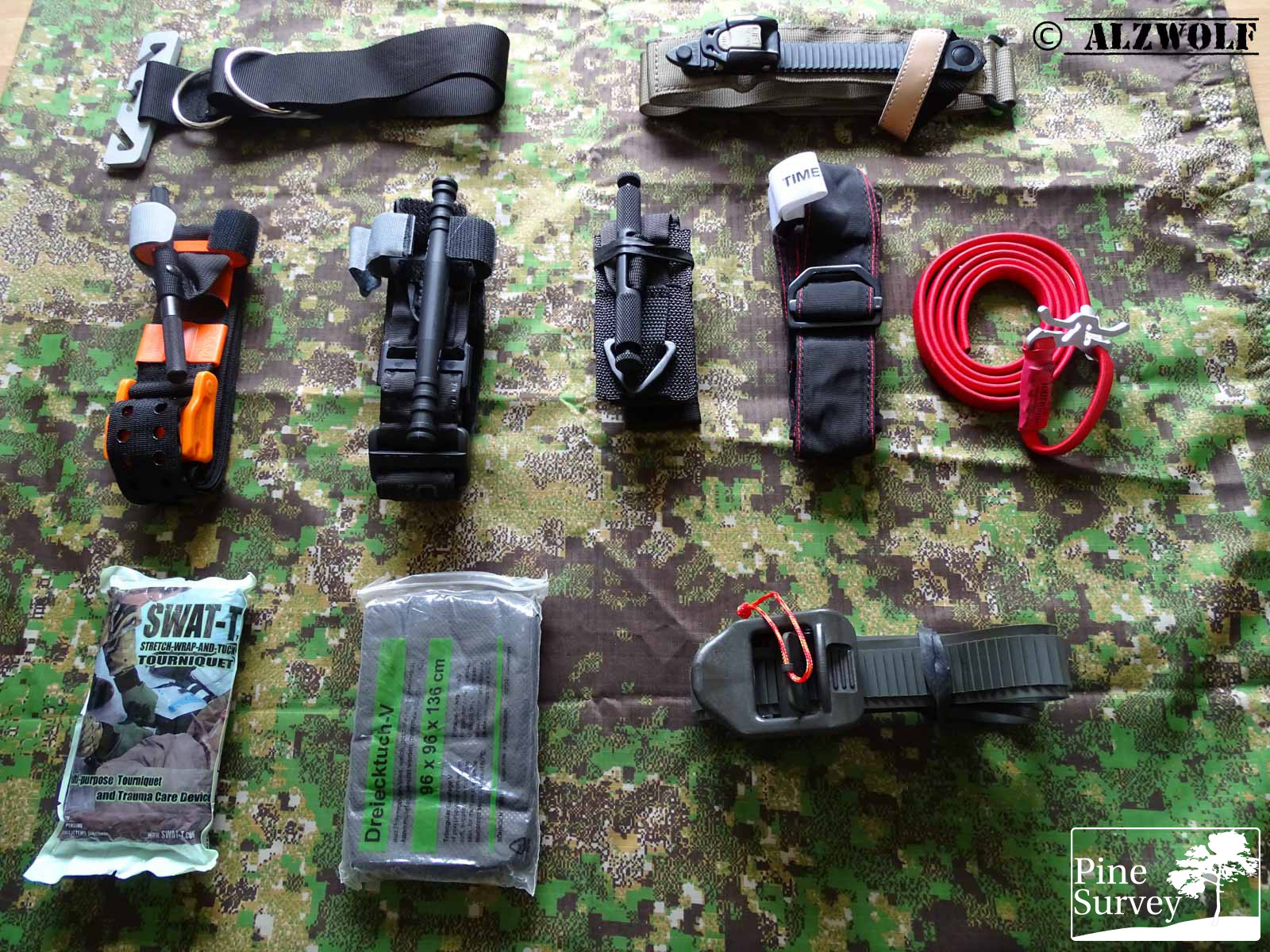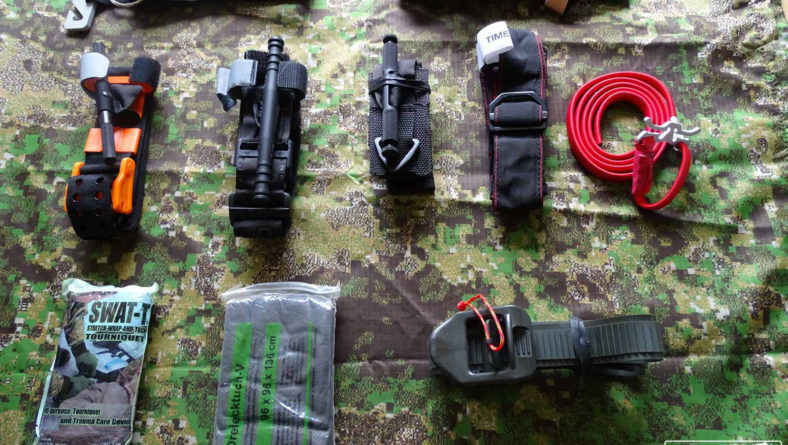Starting next Tuesday, and from then onwards hopefully every following Tuesday, my dear friend and Pine Survey contributor Alzwolf will take you through different commercially available Tourniquets. Today: a few introductory words, to give you an idea what to expect.
Introduction
„A tourniquet (French: turret, also known as a tourniquet) is a ligature system that can block or completely interrupt blood flow in the veins and arteries (depending on pressure). It is the next option after a compression bandage to treat bleeding, especially multiple-penetrating injuries.“ [1]
„In the military, the tourniquet is part of the equipment as part of the Tactical Combat Casualty Care (TCCC). The tourniquet is used to stop a large or multiple penetrating and severely bleeding wound on one extremity, in particular after explosion injuries, e.g. by splinters or bombs. Glued on the tourniquet should be an adhesive tape on which the time of the application must be noted in the military syntax with the date / time group. Otherwise it is to be written with a marker/pen on the forehead.“ [1]
„The use of the tourniquet during the Iraq and Afghanistan wars reduced the lethality of explosive injuries, as it could prevent massive blood loss and above all, bleeding from wounded people with multiple penetrating injuries.“ [1]
„The comparatively narrow tourniquet was designed to be very small and lightweight so that it could be worn by any soldier in rucksacks or on the combat vest and was designed to be quickly applied by wounded soldiers in combat with one hand. Such TQs were effective in stopping deadly arterial bleeding.“ [2]
Sources: [1] Wikipedia, [2] https://tourniquets.org/
Tourniquets
In the following articles, I do not want to talk about how / when / where the TQ is used. But, I want to introduce different models. In addition to the known and common TQ other less known TQ should be presented.
The use of the tourniquet requires professional guidance and practice to avoid mistakes and maximize the life-sustaining hemostasis. We recommend a specialized course, such as by the authorities, the Bundeswehr and specialized private companies. Keyword: „Combat Life Saver / TCCC“. There is no liability for the incorrect use of a tourniquet. Everyone is responsible for himself and his/her actions.
Basically, the application includes a professional briefing, introducing and exercise, exercise, exercise. It is not enough to order a TQ and to carry it with you. The training is the alpha and omega to properly apply and master the TQ in an emergency. Subject-related information should inform about the advantages and disadvantages of the application and risks.
My personal experience has shown that intensive training under drastic and realistic conditions helped me to act properly in case of emergency and to apply the TQ and other resources. This also applies to every piece of equipment that I carry with me. No matter whether business or private.
There is no liability for the incorrect use of a tourniquet. Everyone is responsible for his actions. Each tourniquet is a one-time product!!!
A tourniquet should only be used in emergency situations by trained personnel. This method should only be used if there are no other options for hemostasis and the situation is life-threatening.
I would be pleased, if followed by a clean factual and technical discussion takes place.
The following tourniquets (TQ) are addressed:
- CAT
- SOFT-t
- SWAT T
- REVMEDX with ratchet control system
- R.A.T.S. tourniquet
- SBT Tourniquet
- RET – Rescue use Tourniquet
- SICH Turnstile
- NATO TOURNIQUET, COMBAT

The various TQs for Tourniquet Tuesday


No Comment
You can post first response comment.